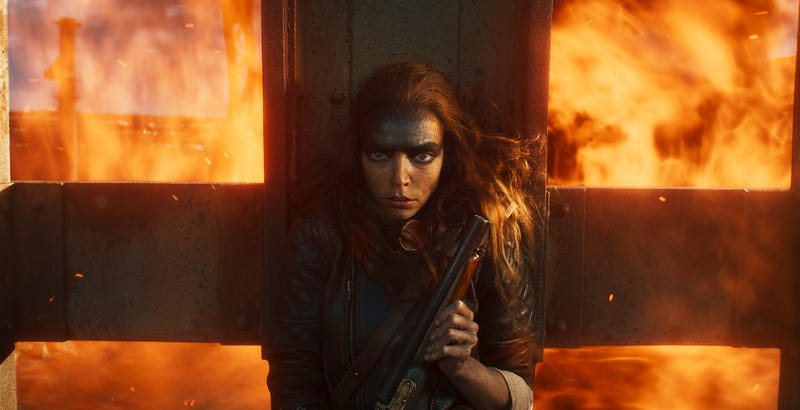‘Furiosa’ tells the story of a world (almost) without hope
The latest installment in George Miller’s post-apocalyptic “Mad Max” saga depicts the struggle for survival in a broken world with neither heroes nor sages.
Furiosa: A Mad Max Saga opens with a God’s-eye view of a fragile sliver of green in a vast expanse of rust orange: an oasis of life in the post-apocalyptic desert landscape of George Miller’s Mad Max films. How fragile the Green Place is, even its guardians don’t know. All they know is that if this place of abundance is discovered by the rapacious hordes jockeying for control of the Wasteland, that will be the end of the abundance. So, when serpents invade this Eden, its guardians will go to any lengths necessary to crush their heads. Yet the garden’s days are already numbered; in less than two decades, the water will turn sour, and nothing will grow. The world is already broken.
Is there no hope? This desperate question hangs over the previous film in the saga, Miller’s 2015 extravaganza Mad Max: Fury Road. Now, the same question haunts Furiosa, an epic origin-story prequel for Fury Road’s stealth protagonist, Charlize Theron’s Imperator Furiosa. Here Furiosa is no less memorably realized, first as a child by Alyla Browne and then as a young adult by Anya Taylor-Joy. From the riveting opening act—a taut, fierce chase sequence resulting in Furiosa’s loss of paradise, the first of several traumatic losses in her life—Miller establishes his heroine as canny, resourceful, and single-minded in her determination to survive and find her way home again.
Following Dune Part Two and Kingdom of the Planet of the Apes, Furiosa is this year’s third dystopian sci-fi sequel set in a harsh world of warlords and conquerors striving to seize the means of production or destruction. Five years ago, secular apocalypses were everywhere in pop culture. While apocalyptic stories are still with us (e.g., the upcoming Quiet Place prequel), increasingly, the focus seems to have shifted to life after the end of the world as we know it. (Our bleak cultural moment may be perfect for the coming third film in Danny Boyle’s 28 Days Later/28 Months Later zombie series, called, of course, 28 Years Later.)
If there is such a thing as hope, these 2024 sequels seem too cynical and weary to look for it in sages, heroes, or high ideals. Once, we might have hoped that the compassion and wisdom of Andy Serkis’s super-chimp Caesar—or Oscar Isaac’s Duke Leto—would light the way forward. But no. Like the latest Dune and Planet of the Apes movies, Furiosa is ambitious and accomplished, and all three are worth seeing on the big screen. Yet a welcome humanistic spirit present in prior films is at a low ebb in this year’s installments. Moral lessons are forgotten or found wanting, and the strongmen who hold sway pervert or mock them…






Just saw it today, going in expecting to be wowed by the action and visuals. Unfortunately I was wowed once or twice (dug the stowaway truck sequence). But I got bored and checked out, yet again another revenge story. Like you I was completely surprised by the exchange about the suffering and revenge. Regarding the ending, Jeffrey Overstreet remarked in his Letterboxd review that it was like a perversion of the Eucharist, which struck me considering that he isn’t Catholic, but a very apt comparison.